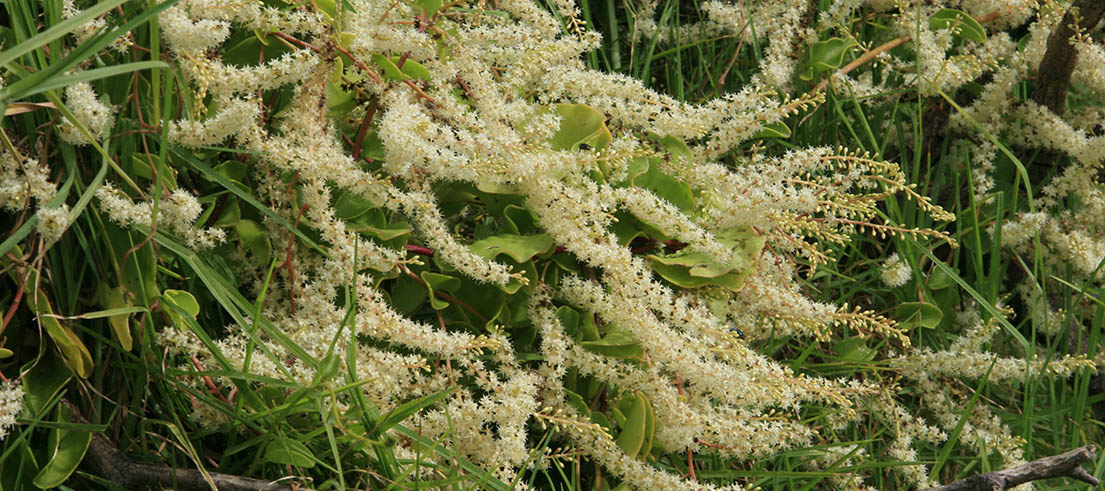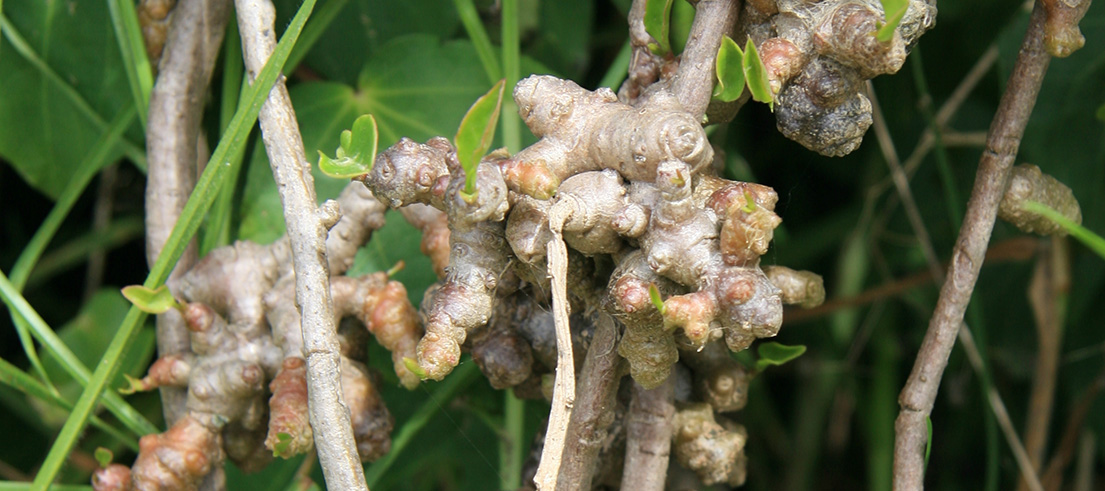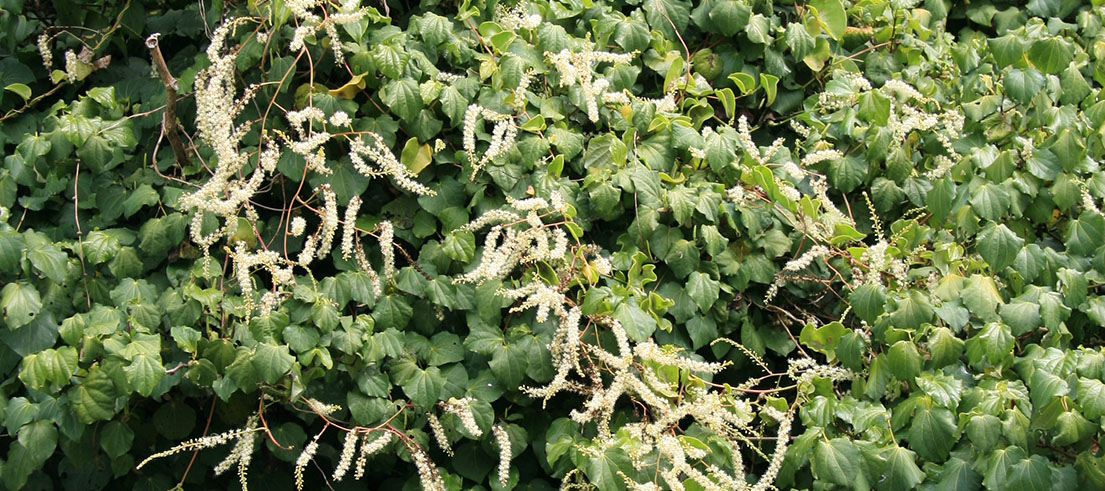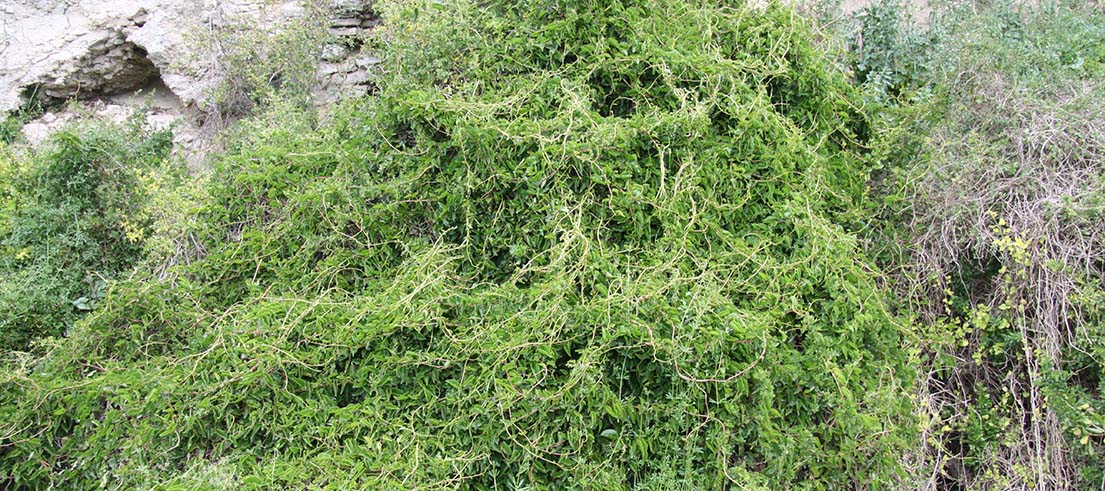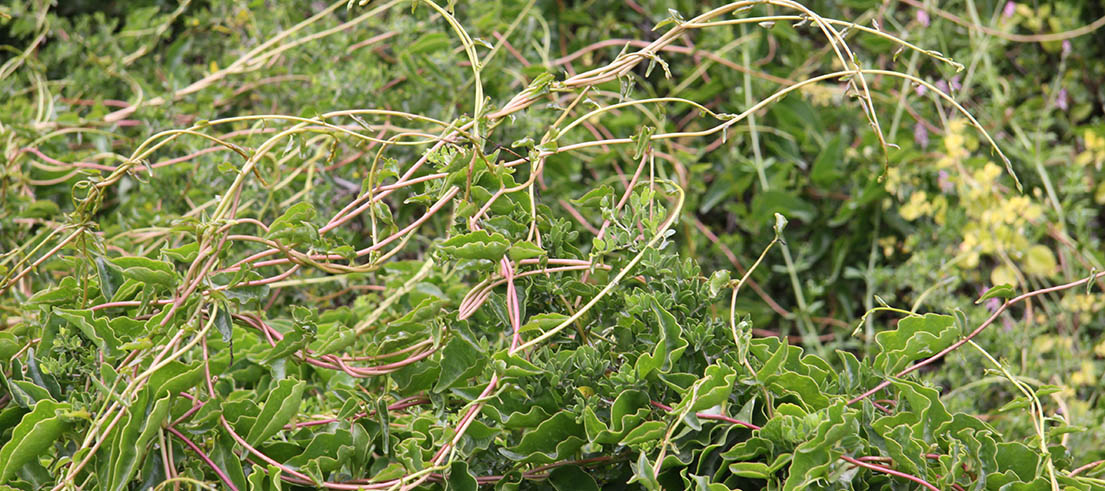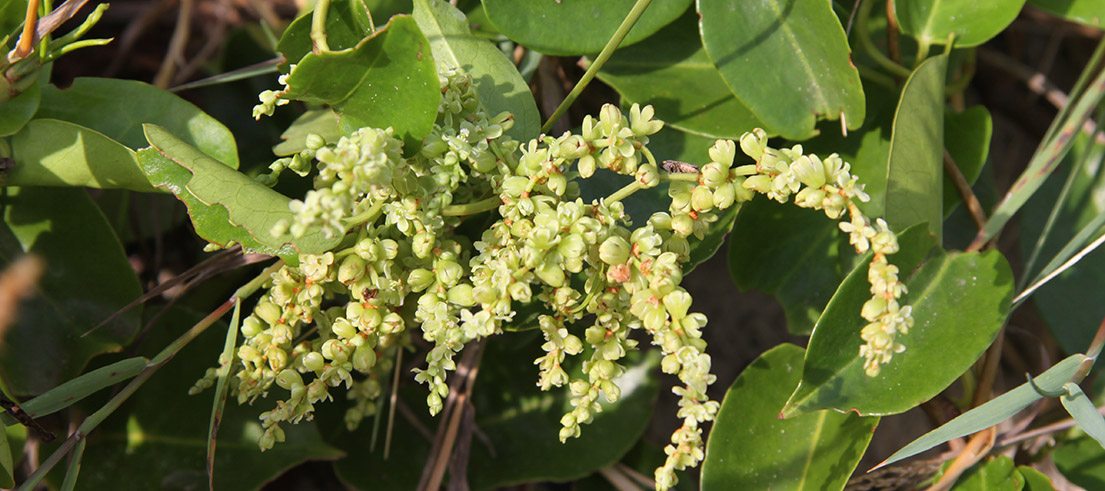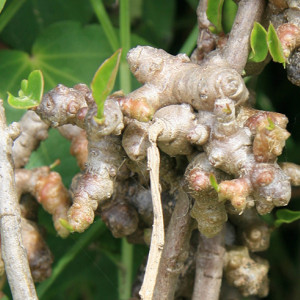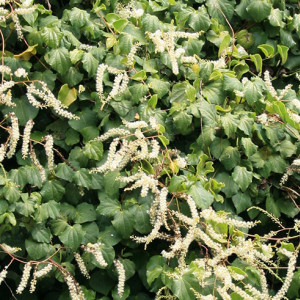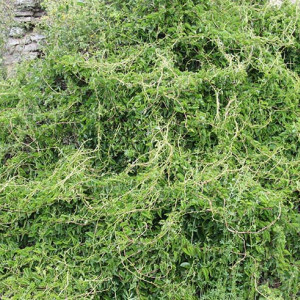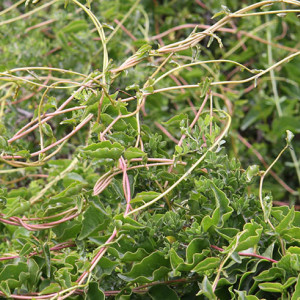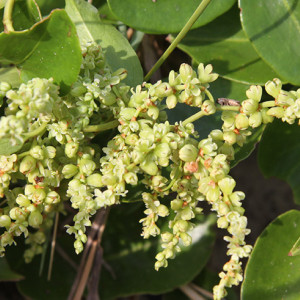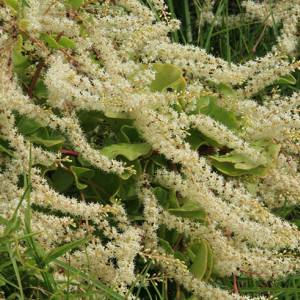Madeira vine is a large (up to 40m long) climbing vine, which smothers and sometimes crushes native understorey plants. Its rhizomes are fleshy and leaves are squarish, oval, or heart-shaped. Its flowers are fragrant in small clusters between January and April.
Description
- Perennial climbing vine with fleshy rhizomes.
- Stems are slender and reddish, with small, warty, aerial tubers.
- Leaves are squarish, glossy, fleshy, oval, or heart-shaped and alternate.
- Vegetative spread from rhizomes, rhizome fragments and aerial and subterranean tubers, dispersed by water. Human-mediated dispersal through dumping of garden waste.
- Habitats include disturbed forests, forest margins, gullies, shrublands, coastlines, dunes, and riparian areas.
What you need to know
Smothers and sometimes crushes understorey plants.
Management approach
Madeira vine is an unwanted organism regulated under the National Plant Pest Accord.
National Pest Plant Accord (NPPA)
The NPPA prevents the sale, distribution and propagation of specified pest plants within Aotearoa/New Zealand and is administered by the Ministry for Primary Industries (MPI).
Rules
Any species declared a pest, including unwanted organisms, cannot be sold or be in a place where plants are being sold. Pest plants cannot be propagated, bred, multiplied, communicated, released, caused to be released, or otherwise spread.
See the MPI website for more information on the NPPA.
Consider removing this invasive species from your property and consult your local council for appropriate disposal. Consider lower-risk alternatives for your garden, such as native plants.
Control
Site management
Cut and pull vines away from desirable trees and native plants before foliar spraying. Follow up treated areas three times per year. Encourage natural regeneration of native plants or replant treated areas where possible after two to three treatments to establish dense ground cover and minimise reinvasion.
Physical control
Cut vines and leave upper stems to die in trees or dig out.
Plant parts requiring disposal: Rhizomes, aerial tubers and underground tubers.
Small amounts can be rotted in a covered water barrel or contact your local council for appropriate disposal.
Chemical control
No qualifications: Cut stump and paste freshly cut base of stems with metsulfuron gel.
Basic Growsafe certified: Cut stump and spray the freshly cut base of stems with 1g metsulfuron-methyl per 1L of water.
Certified handler/experienced agrichemical user: Foliar spray with 3g metsulfuron-methyl and 100ml glyphosate per 10L of water and 20ml penetrant.
Caution: When using any herbicide or pesticide please read the label thoroughly to ensure that all instructions and safety requirements are followed.
Biological control
Biological control is currently not available for this species.

